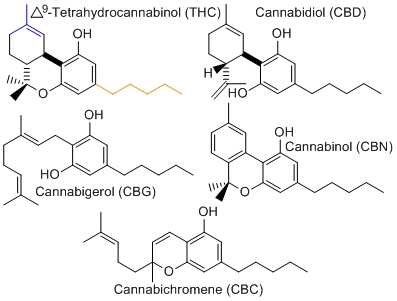
As we already know cannabis has been around since practically the dawn of time. During this time the human race has had a very unique relationship with this plant.
We first identified it as a medicine in 2727 AD. Researchers have found more than 100 unique cannabinoids within the cannabis plant. There are five molecules that make up the majority of cannabinoids found in the cannabis plant. CBD, THC, CBN, CBG, and CBC. We like to talk about what these cannabinoids do, but we never talk about who found them or when they were found.
Just like any other discovery or industry, there were pioneers that stood at the forefront. It was their discoveries that later evolved into isolating specific molecules from the cannabis plant to get a specific outcome.
It was first reported in 1840 where a researcher by the name of Schlesinger completed the first alcohol extraction involving both the flowers and leaves from the cannabis plant. Eight years later another researcher by the name of Decourtive ended up taking it a step further and evaporated the alcohol from the extraction. Once he got rid of all the alcohol he found the remains to be a dark oily resin that he labeled “cannabin”. A bit later into the 19th century other researchers began to test these resins to find what they described as “Powerful Narcotic Effects”.
In 1899 Thomas Wood, WT Spivey, along with Thomas Easterfield discovered CBN. aka Cannabinol. The group obtained a sample of Charas, a hand rolled hash native to India. They took their sample and ran an ethanol extraction from the Charas. That alcohol was then distilled to create an oil. They found that the oil had psychoactive effects in even a dose as low as .05g.
But, cannabis doesn’t produce CBN naturally nor would it occur under distillation. When THC degrades it turns into CBN so it is very likely they were working with an aged piece of Charas. Regardless, they had discovered CBN.
In 1942 Chemist Roger Adams isolated the CBD (Cannabidiol). The compound was extracted from a Minnesota wild hemp plant. It was done through and ethanol extraction and created what they referred to as a “red oil”. The oil was then distilled which allowed for the isolation of a molecule. A few decades later in 1963 the Hebrew University of Jerusalem’s organic chemist Raphael Mechoulam figured out its molecular structure.
In 1963 the masterminds Raphael Mechoulam and Yechiel Gaoni teamed up for 4 years and pioneered cannabis research. One of the biggest questions they answered at that time was “Where do all these cannabinoid’s come from?”. It was through this question where the discovery of CBG (Cannabigerol) happened. This is when they discovered that in the adolescent phase of the cannabis plant it naturally produces CBG. As time went on and the plant matured they discovered that the CBG molecule was degrading to form the rest of the chemistry of the plant such as THC (Tetrahydrocannabinol) and CBD. It was during this very study where this dynamic duo both identified and isolated the THC molecule.

Then in 1965 and again in 1967 they were able to synthesize the molecule based off of the science that was conducted earlier in the century. It was also during the same study that CBC (Cannabichromene) was discovered in 1966. In the end they had identified CBD, THC and synthesized it, CBN, CBG, and CBC making them true pioneers in cannabis research.
CBG, THC, CBD, CBC, and CBN make up the majority of cannabinoids found in the cannabis plant. Science has looked into this chemistry pretty deeply and have identified more than 100 cannabinoids and cannabinoid acids within the chemical structure of cannabis. As time goes by we will be able to identify more of this chemistry as the science in this field progresses and also be able to identify the health benefits of each component. The future looks pretty bright for cannabis science and all the new benefits that will be discovered along the way.



